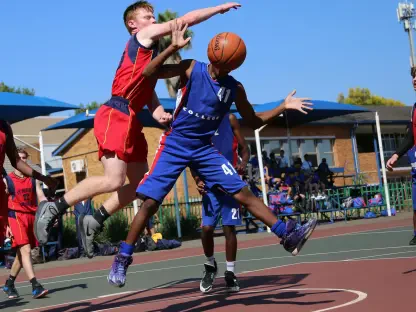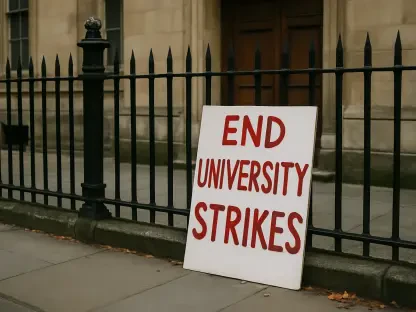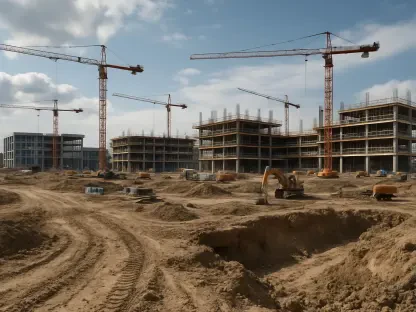In the autumn of 1968, Rochester State Junior College (RSJC) witnessed a dramatic transformation as football returned, breathing life into a campus freshly settled at Horse Thief Cave Hill. The relocation marked a new beginning, with RSJC stepping away from its makeshift origins downtown into an expansive 160-acre site featuring rugged modern architecture and innovative facilities. This transition was not just about changing locations; it symbolized a broader strategic resurgence for the institution, aligning with the growing demands of the post-war era, re-energizing both the college and the local community. Enthusiasm soared as football kicked off after a 17-year hiatus, spurred on by a new campus unveiling, community interest piqued, and optimism surrounding educational opportunity surged.
Laying the Foundations of Change
Historical Context of RSJC’s New Campus
The 1968 football revival at RSJC wasn’t just a single event; it reflected a deeper institutional shift as it transitioned to a vast new campus on Rochester’s eastern edge. The historical significance of Horse Thief Cave Hill provided a narrative backdrop, enriching the college’s cultural landscape. This move coincided with state intervention four years earlier when the college was renamed to cater to the burgeoning post-war baby boom generation. The sprawling campus broke from its cramped beginnings in 1915, when the proposal by Dr. Charles H. Mayo spurred the college’s inception downtown. The fresh start at Horse Thief Cave Hill was an embodiment of post-war growth, a strategic decision aimed at accommodating new generations and reflecting modern architectural values.
With expanded facilities came new opportunities; state-of-the-art buildings were planned, including a gym and theater, redefining what RSJC could offer its students. As the college embraced its new identity, the commitment to community and education deepened, reinforcing RSJC’s role as a vital player in the region’s educational landscape. These advances constituted not just physical growth but an evolution in institutional philosophy, aligning with broader societal trends and educational models of the late 20th century, encompassing greater inclusivity and expanded curriculum opportunities.
Athletic Revival and Its Impact
Led by Coach Cy Champa, the reinvigorated football program immediately dispelled doubts with a remarkable season, quickly galvanizing the campus spirit through its impressive performance of five wins and one loss. The collective enthusiasm extended beyond the athletic fields, heightening interest across the college’s other departments and invigorating campus life. The team’s success wasn’t merely reflected in game statistics; it also symbolized unity and determination, capturing local attention and boosting faculty and student morale.
The football program’s success became a catalyst for broader recognition of RSJC. The newfound attention elevated the junior college’s stature, aligning it with the community’s values and expectations. This athletic resurgence not only underscored a turning point in sports culture at RSJC but also played a crucial role in fostering a sense of belonging among students and staff. Alumni engagement increased, forging stronger ties with current students, and contributing to a vibrant, interconnected campus community. Football created a platform for shared experiences, shifting perceptions and setting the stage for future advancements in academic and extracurricular programs.
The Legacy of Growth and Opportunity
Educational Expansion and Community Engagement
The initial success of RSJC’s football revival was just the beginning of a larger pattern of growth, marked by continued expansion and enhancement of both facilities and academic programs. Over the following decades, the college experienced a transformation in its educational offerings, evolving from a junior college into a comprehensive institution known today as Rochester Community and Technical College (RCTC). This development was not limited to infrastructure; the curriculum expanded substantially, responding to the professional needs of the region and supporting diverse career paths for students.
As the campus grew from 160 to 518 acres, it included a dedicated football stadium and various other facilities that underscored RSJC’s commitment to providing holistic education. The expansion marked a continuous journey of adapting to the changing landscape of higher education, reflected in its broad roster of programs and enhanced engagement with community stakeholders. This mutual exchange of ideas and resources reinforced the college’s mission, impacting not only student outcomes but also regional economic and social development.
Modern Transformation and Cultural Integration
The 1968 revival of the football program at RSJC was more than an isolated event; it symbolized a broader institutional transformation tied to moving to a sprawling new campus on the eastern outskirts of Rochester. This relocation added a rich historical context with Horse Thief Cave Hill, enhancing the college’s cultural narrative. Four years prior, state intervention led to a renaming of the college, aligning it with the needs of the growing post-war baby boom generation. Moving from its original 1915 downtown location, established through the efforts of Dr. Charles H. Mayo, the expansive new campus signified a strategic break aimed at addressing post-war growth by accommodating modern generations and reflecting contemporary architectural visions.
The advanced facilities, including plans for a gym and theater, were set to redefine RSJC’s offerings. As the institution embraced a new identity, it strengthened its community and educational commitments, cementing RSJC’s role in the regional educational sphere. This growth was not just physical; it marked an evolution in institutional philosophy, mirroring late 20th-century trends toward inclusivity and a broader curriculum.









